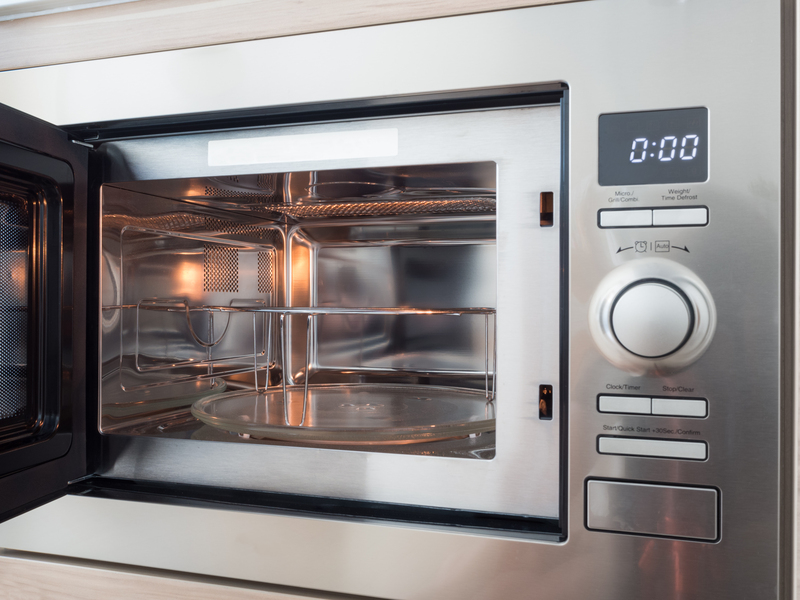Air Quality: The Invisible Influence on Home Health
Posted on 21/06/2025
Air Quality: The Invisible Influence on Home Health
When you think about the healthiness of your home, factors like cleanliness, organization, and safety might come to mind. But have you ever considered the quality of the air you breathe at home? Indoor air quality is an often overlooked, yet crucial aspect of home health. Unseen to the naked eye, the air in our homes can harbor pollutants, allergens, and toxins that have a significant impact on well-being. In this in-depth article, we'll explore the importance of air quality at home, its sources, the consequences of poor air, and actionable steps to maintain a healthy indoor environment.
What is Indoor Air Quality?
Indoor air quality (IAQ) refers to the condition of the air inside buildings, especially as it relates to the health and comfort of the occupants. Good indoor air quality means your home environment is free from excessive pollutants and irritants.
- Particulate matter (PM2.5 and PM10)
- Volatile Organic Compounds (VOCs)
- Carbon monoxide and other gases
- Biological agents (mold, bacteria, pet dander)
- Humidity and temperature levels
These factors can all influence air quality and, consequently, your health.

Why is Air Quality an Invisible Influencer?
Unlike visible dirt or dust, airborne pollutants are often invisible, making them easy to underestimate or ignore. However, the impact of air quality on your home health is profound:
- Respiratory Problems: Poor indoor air can aggravate allergies, asthma, and other respiratory issues.
- Mental Clarity: Contaminated air can cause headaches, fatigue, and even affect cognitive functioning.
- Long-term Health Risks: Chronic exposure to certain pollutants has been linked to heart disease, cancer, and lung ailments.
Understanding and addressing air quality is essential for everyone, but it's especially critical for children, the elderly, and those with pre-existing health conditions.
Main Sources of Indoor Air Pollution
Where do these invisible threats come from? There are multiple sources:
1. Outdoor Pollutants Infiltrating Indoors
- Vehicle emissions, pollen, and industrial pollutants can make their way indoors through open windows and doors.
- In urban areas, fine particulate matter from traffic is a common indoor contaminant.
2. Indoor Activities and Products
- Cooking and Heating: Gas stoves, wood-burning fireplaces, and space heaters can emit carbon monoxide and nitrogen dioxide.
- Household Cleaning Agents: Many cleaners release VOCs that linger in the air.
- Personal Care Products: Scented sprays, candles, and air fresheners can contribute to indoor chemical pollution.
3. Building Materials and Furnishings
- Older homes may harbor asbestos, lead, and formaldehyde from building materials.
- Newer furniture and flooring can also off-gas VOCs for months or years after installation.
4. Biological Pollutants
- Mold and Mildew: Thrive in humid environments, especially bathrooms and basements.
- Pet Dander: Even with pets you can't see, their allergens may still find their way into your home.
- Dust Mites: Common in bedding, upholstery, and carpets.
Health Risks Associated with Poor Home Air Quality
The consequences of poor air quality in the home manifest in a range of health issues, from mild to severe. Here's how:
Short-Term Effects
- Eye, nose, and throat irritation
- Coughing, sneezing, and allergic reactions
- Headaches and dizziness
- Exacerbation of asthma symptoms
- Fatigue and decreased productivity
Long-Term Health Problems
- Respiratory diseases, including chronic bronchitis and aggravated asthma
- Cardiovascular issues
- Developmental problems in children
- Increased cancer risk (e.g., radon exposure)
- Compromised immune system
Children and seniors are most vulnerable, but everyone benefits from living in a clean-air environment.
Identifying and Assessing Air Quality in Your Home
Wondering if your home has healthy air quality? Here are practical ways to examine indoor air health:
Warning Signs of Poor Air
- Mold or mildew smells
- Frequent condensation on windows
- Odd or chemical-like smells from new furniture or paint
- Persistent allergy symptoms indoors
- Visible dust buildup
Air Quality Testing Options
- DIY Kits: Affordable and accessible kits can help test for mold, radon, VOCs, and carbon monoxide.
- Professional Inspection: For comprehensive analysis, professionals use sophisticated sensors and standards-based evaluations.
- Smart Air Quality Monitors: Modern devices can give real-time feedback on particulate, chemical, and humidity levels.
How to Improve Air Quality at Home: Actionable Steps
Now that you understand the importance of high-quality air indoors, let's discuss steps to make your home healthier for your family:
1. Enhance Ventilation
- Open windows regularly, when weather and outdoor air quality permit
- Use exhaust fans in the kitchen and bathroom
- Keep vents and ducts unobstructed and clean
- Consider installing a mechanical ventilation system
2. Purify Indoor Air
- Invest in HEPA air purifiers for bedrooms and common areas
- Choose plants known to be indoor air filters, such as spider plants and peace lilies
- Change HVAC filters regularly (every 1-3 months)
- Schedule professional HVAC cleanings annually
3. Control Sources of Pollution
- Avoid smoking indoors
- Store chemicals, paints, and cleaning supplies safely and use them sparingly
- Limit use of scented candles, fresheners, and similar products
- Choose low-VOC or VOC-free construction materials and furnishings
4. Manage Humidity
- Keep indoor humidity between 30% and 50%
- Use dehumidifiers in damp areas (basements, bathrooms)
- Repair leaks and address water damage promptly
5. Practice Regular Cleaning
- Dust and vacuum with HEPA-filter vacuums weekly
- Wash bedding in hot water to reduce dust mites
- Groom pets regularly
- Declutter to minimize dust collection spots
Latest Innovations in Home Air Quality Solutions
Technology continually advances, offering new ways to keep your indoor air healthy:
- Smart Air Quality Sensors: Connected devices can monitor and automatically adjust air purifiers, humidifiers, or HVAC systems.
- All-in-One Purification Systems: These now often include HEPA filters, carbon filters, UV sterilization, and smart controls.
- Natural Building Materials: Eco-friendly paints, flooring, and insulation reduce off-gassing and support cleaner air.
- Energy Recovery Ventilators (ERVs): These systems improve ventilation and energy efficiency.
Debunking Myths About Home Air Quality
- Myth: "If my home looks clean, the air must be clean too."
- Reality: Invisible gases and chemicals can pollute even spotless homes.
- Myth: "Indoor plants alone will clear the air."
- Reality: While plants help, professional air filtration and source control are far more effective.
- Myth: "All air purifiers do the same job."
- Reality: The effectiveness varies based on filtration type and room size compatibility.
- Myth: "Air fresheners improve indoor air quality."
- Reality: Many release VOCs that can make air quality worse.
The Economic Benefits of Good Home Air Quality
Prioritizing high-quality air at home isn't just good for health--it's smart financially:
- Reduced Medical Bills: Fewer allergies and less respiratory illness equal less time at the doctor's office.
- Increased Productivity: Improved cognitive function and sleep mean you feel (and work) better.
- Higher Property Value: Homes with advanced air filtration, ERVs, and eco-friendly materials fetch higher prices.
- Longevity of Furnishings: Proper humidity control prevents mold-related damage to furniture and interiors.
Sustainable Living and Air Quality
The choices you make for better home air quality often align with eco-friendly living:
- Using non-toxic, responsibly sourced cleaning and building products
- Adopting energy-efficient appliances and insulation
- Reducing unnecessary waste and chemical use
In the long run, taking care of your home's indoor air is a step toward a healthier planet too.

Air Quality: A Lifelong Commitment
Monitoring and improving the invisible air in your home isn't a one-time project--it's a habit. As seasons, activities, and products in your home change, so can air quality risks. Make it a routine to:
- Check and replace HVAC filters
- Inspect for leaks, mold, and excess humidity
- Evaluate newly purchased products for VOC emissions
- Test air quality periodically, especially if household members report symptoms
Conclusion: Make Air Quality a Priority in Your Home Health Strategy
Air quality is an invisible, yet critical, component of home health. By paying attention to air purity, pollution sources, and modern solutions, you'll benefit everyone under your roof. Remember:
- Healthy indoor air supports better sleep, focus, and overall wellness
- Children, seniors, and individuals with health conditions are most at risk from indoor air pollution
- Simple daily habits, regular maintenance, and smart products go a long way toward improving indoor air quality
By embracing a mindful approach to your home's air, you're laying the foundation for a healthier, happier life. "The air you breathe indoors is more important than you might realize--make every breath count."





